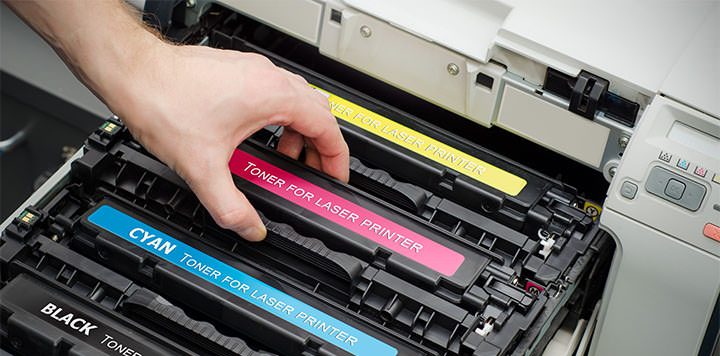Spend more to save more?
Ok, the price is right! How many times, in the company’s day to day operations, have we felt so certain that what we were paying for an object, a production component, a machine, or a service, was really the right price?
How many times have we regretted not having applied the so-called SMBSM: Save More by Spending More?
Basing one’s choice on the acquisition price, one often runs the risk of being mislead.
In order to conduct a correct analysis, we should also include an assessment of what costs we will incur during the period in which we will use the good or service purchased.
In managerial jargon this concept is called Total Cost of Ownership (TCO) and its application is easy to understand if we think of a common experience: purchasing a printer for personal use.
Normally, when we buy a printer, it contains four or six cartridges corresponding to the basic colours, one of which will certainly be black. Carried away by enthusiasm, at the beginning we print almost everything in colour. Unfortunately after a few pages, the software will inform us that the “initial” cartridges are running out. At that point we start printing in black and white. After a while the system will warn us that even the black ink is running out. Even if we were careful enough to buy the colour printer at the lowest price, we will try to find the colour cartridges thinking that they will be cheap or, in the belief that we can survive a slight downgrade from colour to black and white, we will just try to buy black ink.

The surprise, to use a strong term, will be dramatic: the printer will only work if all the cartridges are installed and if they all have ink in them. Second surprise: the original colour kit costs four times the original purchase price of the printer! The cost per copy will be far higher than what we had budgeted for at the time of purchase!
I use this real life example that we have experienced to introduce the concept of Total Cost of Ownership (TCO).
When the company instructs the purchasing department to reduce the costs of acquiring goods and services, or when the purchasing department has to evaluate different alternatives, they will not always conduct a proper TCO assessment: in the first case, they will look for a discount on the price, with the possible repercussions on the quality of the good or service provided, while in the second case the choice will be oriented to the supplier who offers the good or service at the lowest price without taking into account the different factors which will influence the future “management cost” of the good or service purchased.
You can't always save more by spending more
Why do we use the “save more by spending more” concept so often? Essentially because a product with a higher purchase price corresponds, in general, to a better quality product , and a longer life cycle before having to replace it, for instance.
This concept obviously cannot be translated sic et simpliciter into the business world, because the costs of managing a component, for example, are a function of several variables that cannot be ignored at the time of the TCO assessment.
For example, in the industrial sector, does the supplier give us self-certified components or do we have to define strict acceptance procedures? Does the supplier deliver the already distributed components in small industrial containers that I can easily put in front of the operators who will have to use the component or will I have to carry out complex transfer operations in the warehouse?

Sometimes the “illusion” of the lowest price translates into worse payment conditions; other times it is hidden in less flexible services, in different service delivery schedules which are not in line with our needs. Lower purchase prices could also correspond to worse logistical conditions such as the supplier not accepting its commitments to so-called “on-time delivery (OTD)”.
A potential alternative raw material supplier will propose an “absolutely” identical material to the one currently used at an extremely competitive price, but after exhaustive attempts at testing the material we will discover the real reason for the price difference: for example the fact that it cannot be used in our manufacturing process!
The 3 elements to evaluate Total Cost of Ownership (TCO)
The first thing to think about is internal to our company: what are the real needs? Within the concept of “SMBSM” actually hides the danger of spending more, sometimes much more, compared to our actual needs! We therefore need to reflect carefully with our colleagues, usually our internal customers, on the actual needs and translate them into a checklist covering the various operational and quality aspects.
Without intending to be exhaustive, we propose some parameters necessary for a complete TCO assessment.
A complete TCO assessment cannot ignore the fact that the cost of managing a good or service is always influenced by factors linked to direct costs , to management costs and, no less important, to therisks associated with supply.
1. DIRECT COSTS
Direct costs are generally considered in any commercial transaction between customers and suppliers: normally no one forgets the costs associated with transport, packaging, payment terms and customs duties.
2. ACTIVITY COSTS
In the activity costs we need to consider all the costs to be incurred before fulfilling the first order must be considered (generally defined as pre-order costs), and obviously in the case when launching a new supplier to which we have to add the running costs (operating costs). Just think about the already highlighted costs of not receiving self-certified products and having to use our own personnel to check the purchased components!
The operating costs are all the costs we incur due to the very fact of buying a good or service. In order to obtain the purchased goods we must issue an order, the supplier will send the order confirmation, the delivery process will be activated and finally the carrier will deliver the ordered goods. Unfortunately, the process does not end here: someone will have to check that the goods correspond to what was ordered, someone else will check that the quality of the goods we’ve received complies with standards and someone will check that the invoice that the supplier sends after the delivery of the goods coincides with purchase order issued.
Let’s imagine that we have the possibility to verify not only direct costs but also indirect costs when choosing the supplier. Which supplier would we choose?
Surely we would never choose the supplier that has to be repeatedly requested, by phone or by email, to deliver the goods or provide the service due to the burdensome extra management costs.
Surely we would never choose the supplier that delivers the black toner instead of magenta, forcing us to send the toner we received back to the supplier (even if the supplier has paid the return costs, we must prepare the package, organise the “re-shipping” with all the extra costs that may arise).
We certainly would not choose the supplier that does not have a security stock that provides constant assurance for us against possible production stoppages due to their delivery problems (and in this case, talking about extra costs becomes no less reductive).
From these few examples it becomes abundantly clear that a supplier “A” that creates all, or even some of these problems, can certainly have a more competitive price than supplier “B” due to the lack or inadequate dimensions of its organisational structure in order to guarantee the expected service or the quality of products sold.
In the higher price we are going to pay the supplier “B”, we will likely have to pay a premium corresponding to the fact that this supplier has an organisation that adheres one hundred percent to the required quality specifications and we will certainly not have problems in having them sign not only the supply contract, but also a Service Level Agreement that regulates all aspects of the supply itself.
3. RISK FACTORS
In a supply relationship, there are risk factors that further “complicate” the TCO assessment of a good or service.
For example, how can we assess the TCO of an asset acquired by a supplier which is at risk of bankruptcy? In this case the supplier might make further discounts on the prices of the goods it sells but only to generate cash and delay the time until it will have to bring its books to court. And what will be the costs that we’ll have to incur at that time?
What happens when we are a supplier’s only customers or we’re the customer that ensures almost all the revenues for a certain supplier?
What happens if a supplier does not comply with all the safety or environmental regulations in an effort to keep sale prices down? At the first sign of an incident the supplier will be forced to interrupt their supply, with all the issues that this entails for our organisation.
Therefore, we also need to have a comprehensive assessment grid also for the risk factors which will allow us to pragmatically and realistically evaluate the practical impact of the different factors in order to carry out a complete TCO assessment.
The "reasonable cost": neither too high nor too low
In this article we have learned that basing our purchasing choices only by looking at the vendor’s sales price often risks leading us onto more onerous and riskier roads.
The logic that whoever spends more saves more is not always valid, nor is it wise to simply find the lowest price on the market.
An in-depth valuation of the direct costs, the operating costs and the supplier’s risk factors helps the purchasing department in its work and therefore helps the company as a whole to obtain goods and services consistent with its real needs and at the most reasonable cost.
This concept has a much greater impact on the company especially when the product or service purchased has a strategic value.
In conclusion, purchasing plays a fundamental role in the selection and management of suppliers and TCO is certainly one of the supplier evaluation parameters that cannot be ignored.
Article by:

Riccardo Sivori
Lenovys Master
Riccardo has developed a solid multidisciplinary experience and has held positions of increasing responsibility and complexity in multinational companies. He has gained extensive experience in optimisation and cost reduction processes through the use of Lean Production and Six Sigma Quality control tools.


